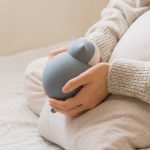

Raw Material Selection and Preparation
Main Raw Material Selection: The core raw material of silicone hot water bags is silicone, typically food-grade or medical-grade silicone to ensure safety and no harmful substances. Fumed silica is also used to enhance the strength and hardness of the silicone, improving the durability of the hot water bag. The typical weight percentages of silicone, fumed silica, and curing agent are 80-85%, 12-18%, and 1-3% respectively.
Raw Material Mixing: The selected silicone, fumed silica, and curing agent are added to a mixing machine in precise proportions. A specialized mixing device is used to thoroughly mix the ingredients, ensuring uniform composition throughout the entire process. This provides a stable foundation for subsequent processing and ensures consistent performance of the hot water bag.
Sheeting Process
Extrusion: The uniformly mixed raw materials are conveyed to an extruder. The extruder extrudes the raw materials into sheets according to preset thickness and width parameters, a process known as sheeting. This process gives the raw material a preliminary shape, preparing it for subsequent injection molding. The thickness accuracy of the cut sheet will affect the thickness uniformity and overall quality of the final hot water bag.
Injection Molding
Mold Preparation: A high-precision injection mold is custom-made based on the hot water bag design. The mold must take into account the shape and dimensions of the hot water bag, leaving space for molding areas such as the water inlet and sealing structure. The surface must be finely polished to ensure a smooth surface of the silicone after molding.
Injection Molding: The cut silicone sheet is transferred to the injection mold, and the injection temperature is controlled between 45 and 55 degrees Celsius. This temperature range allows the silicone to flow well and fill all parts of the mold without prematurely curing or degrading its properties due to excessive temperatures. After the silicone is injected, the mold is closed and awaits the next step.
Curing Stage
Core Preparation and Inflation: After injection, the core is removed, the mold is closed, and air is inflated into the core. Inflation maintains pressure, evenly compressing the silicone within the mold while also fixing its shape and preventing deformation, ensuring uniform wall thickness and a regular appearance.
High-temperature curing: Next, the mold enters the high-temperature curing stage, where the mold is placed in an environment of 160-200°C for 2-5 minutes. Under high temperature, the silicone and curing agent react fully, completing the cross-linking and curing process, giving the hot water bag stable physical properties such as a certain level of hardness, flexibility, and strength.
Post-processing: Deburring: After curing, the hot water bag may have imperfections such as flash and burrs on its surface. Workers carefully remove these imperfections through manual trimming or mechanical polishing equipment, resulting in a smooth and even surface, improving appearance quality and safety, and preventing scratches on the user’s skin.
Post-curing (if necessary): Some silicone hot water bags with extremely high performance requirements require post-curing. The product is placed in an oven at 180-220°C for 2-4 hours. This can further reduce the product’s volatile matter content, improve its stability and durability, and meet higher standards of use.
Surface Treatment and Accessory Installation: Surface treatment is performed based on the product design, such as spraying tactile oil to give the hot water bag a pleasant feel and laser engraving of the logo to add brand identity. Furthermore, the water inlet fittings and sealing plugs are installed to ensure the hot water bag’s tightness and functionality.
Quality Inspection
Appearance Inspection: Each hot water bag is manually inspected for missing material, bubbles, dirt, and color unevenness to ensure a flawless appearance.
Dimensional Accuracy Measurement: Using CMM (Computer Measurement Machine) equipment, the hot water bag’s dimensions, including length, width, thickness, and water inlet diameter, are precisely measured to ensure deviations from the designed dimensions are within acceptable limits.
Performance Testing: Hardness is tested using a Shore A durometer, and physical properties such as tensile strength are tested according to ASTM D412. For hot water bags made of food-grade silicone, safety indicators such as total migration are also tested to ensure product quality and safety.
Packaging: Product protection: Qualified silicone hot water bottles are first wrapped in PE bags to protect them from dust and moisture, preventing damage during transportation and storage.
Packaging: They are then neatly packed into cartons. The packing quantity and method are arranged according to the customer’s order requirements. The outside of the cartons is labeled with information such as product name, specifications, quantity, and production date to facilitate logistics and traceability. This completes the entire production process for silicone hot water bottles, from raw materials to finished product.
